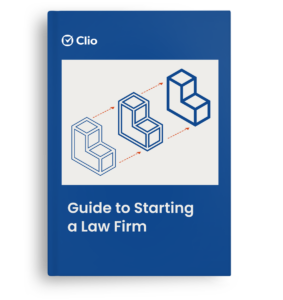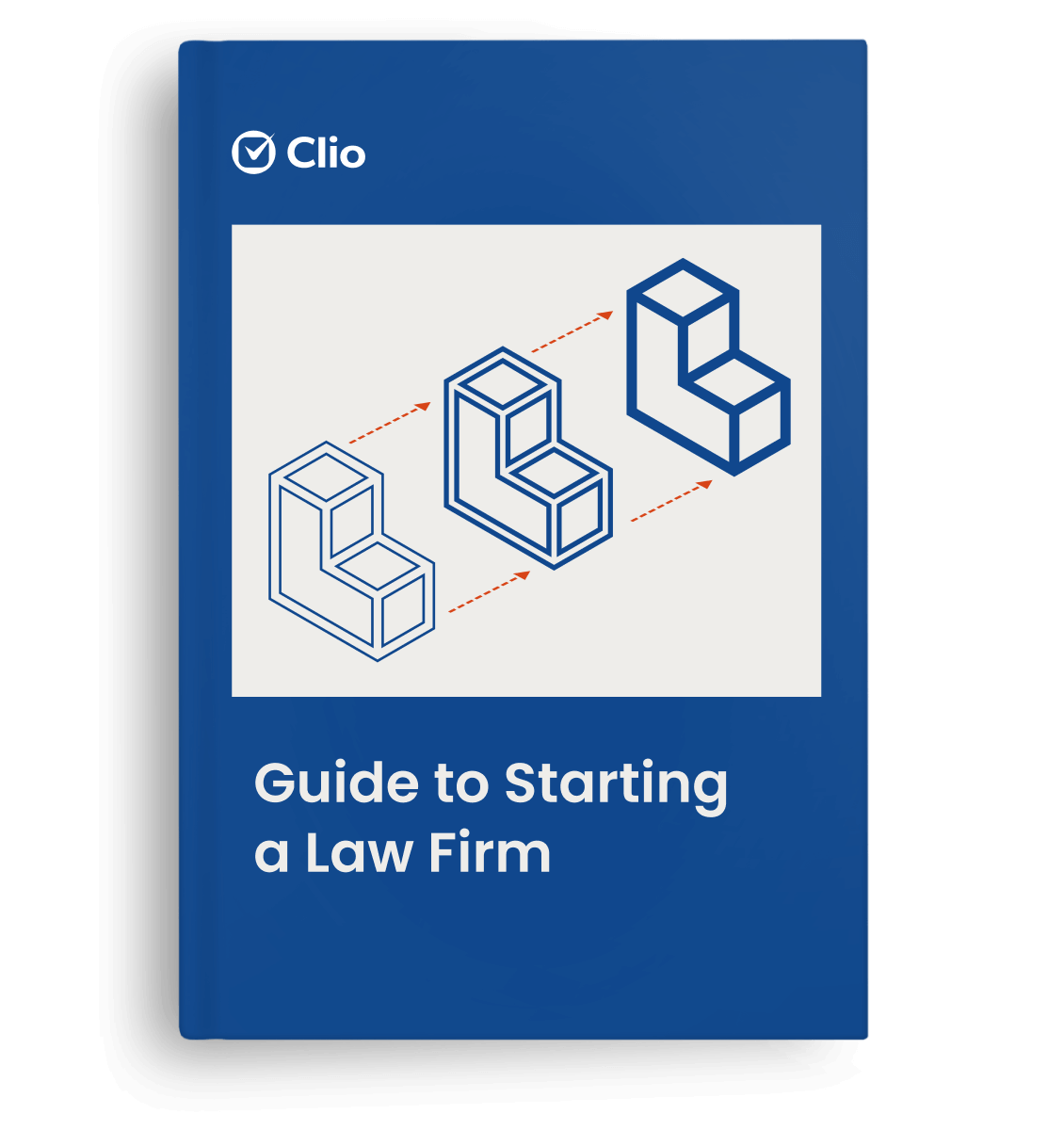When it comes to the practice of law, we often think about court appearances. But crafting a winning legal argument requires a lot of research.
Well-conducted legal research empowers your arguments and gives substance to your legal work, leading to a better outcome for your clients.
To become a pro, you need to understand the tools available to you, and developing a research strategy. Learning to conduct effective legal research isn’t glamorous. That said, it will save you time while helping you conduct stronger outcomes.
This guide reviews the fundamentals of the legal research process, including what sources you should turn to—and when. We’ll also discuss how and why you should check that you’re using “good” law, and offer tips for how you can improve your legal research skills—at any stage in your career.
In order to run an efficient practice you need to have the right technology by your side. With Clio Duo, our AI-powered tool, you can easily pull details from documents, write case summaries, and organize your day—demo Clio Duo today.
What is legal research?
Legal research involves identifying, finding, and cite-checking information and applicable laws needed to support your legal decision-making. The primary and secondary legal sources for this research include statutes, constitutions, regulations, court orders, and more.
How to conduct legal research
While the techniques and tools you use may vary, the goal of legal research is simple: You want to find the relevant information and resources (i.e. laws) that apply to the facts of your case, so you can support legal decision making.
With this in mind, the legal research process can be broken down into three basic elements:
- Understanding the key details and questions of your legal issue
- Finding laws and information to support your legal argument checking that what you’ve found is still relevant
- Achieve your research goals in seven easy-to-follow steps:
The 7 steps to conducting legal research
1. Gather critical information about your legal issue
When presented with a legal issue, it’s natural to want to dive in and start looking for cases. But it’s in your best interest to first collect key details about the legal issue at hand.
Pausing to gather and record critical details (like the who, what, when, where, and how of your case) lays the foundation for a more focused, streamlined legal research process.
2. Establish your legal issue and your goal

Next, use your case’s critical information to pinpoint your legal issue. By establishing legal issues and your client’s ideal outcomes before you start researching, you can construct a well-defined framework that allows you to:
- See what you know about your legal issue—and what you need to find out
- Narrow the field of potential search terms
- Identify the jurisdiction you need to focus your research within
3. Learn and understand the precedent in your jurisdiction
While researching, pay special attention to the geographical location where your legal issue will be resolved. Is the precedent controlling already in your jurisdiction? Or is it merely a persuasive precedent that has not yet been adopted in your jurisdiction?
4. Determine the type of legal sources you need
Each of the three types of legal sources you’ll work with has a purpose when conducting legal research. Here’s a quick overview:
Primary legal sources are key to legal research because they establish the current law on whatever legal issue you’re working with. You can find primary sources by searching legal research databases like Fastcase or Casetext, include:
- Federal and state constitutions
- Statutes or legislation (such as laws enacted by legislative bodies like Congress and state legislatures)
- Treaties
- Regulations (such as rules or regulations made by either federal or state agencies)
- Annotations
- Case law (such as court opinions or decisions issued by federal or state courts)
Secondary legal sources explain or interpret legal principles in detail, or summarize the current state of the law—giving a better understanding of a particular area of law. These sources are also useful for identifying primary sources for your case (more on that later). Examples include:
- Law review articles and journals
- Practice guides
- Legal treatises
Learn more about the best free legal research tools available.
5. Begin your legal research with secondary sources
When it comes to conducting legal research, start in the middle with secondary sources.
In addition to providing important background information on your legal issue, secondary sources save time: Instead of starting from scratch, you can leverage the expert work that’s already been done.
Think of it this way: In order to create and publish the material, experts had to go through a legal research process themselves. If a secondary source is reputable, the writer reviewed all of the available primary resources to determine what was most applicable. So, by noting the primary sources that are cited in law reviews, law journals, and case-law documents, you can take advantage of the research already done.
Note: Also keep in mind that useful cases don’t necessarily have to have the same legal outcome as your goal. If you find relevant case law where the outcome didn’t match your client’s desired outcome, you shouldn’t necessarily disregard it. If the laws are aligned, you can use that case to show how the fact patterns in your client’s case are different to strengthen your own argument.
6. Check that you’re using “good” law
Another key step to legal research is verifying that any cases and statutes you come across in your legal research are still “good” law—that is, that any legal decision you’re looking to is still valid and relevant. Using an overruled or unconstitutional statute won’t help you win your case.
Can older cases be “good” law?
While more recent cases are preferred (after all, they’re more likely to reflect the current legal changes that could impact the case law—and are thus less likely to have been rendered obsolete), recency isn’t mandatory.
A decades-old case could be considered “good” law—if it hasn’t been overruled in court or otherwise made irrelevant, an older case that fits with your case’s fact pattern and applicable law could be helpful.
Verify you’re using “good law” with a citator
How can you check if you’re using “good” law? Use a citator. Citators let you verify a case’s authority by giving you a cataloged list of cases, statutes, and legal sources—along with a history and precedential value for those sources—so you can then check that it hasn’t been overruled, questioned, or made irrelevant.
When using a citator, focus on the negative material (by checking a case in a citator, you can look for flags that indicate any negative history). Specifically, use a citator to check that you don’t miss a case that invalidates your argument—which could undermine your credibility.
Major legal databases all have their own citator tools. For example, Casetext offers SmartCite, which “uses a system of flags to indicate the treatment of cases.” Casetext can also “help you evaluate whether a case is good law and find other relevant cases citing that opinion.”
7. Report your results to check for gaps
Compiling your research into a legal memorandum is a necessary part of conducting legal research, as it allows you to identify any gaps in information that may present consequences at a later stage. Legal writing presents challenges within itself, and it’s not a bad approach for you to supplement your legal case research with a book from a local law library on how to present your findings. Generally speaking, a legal memorandum does five things:
- States the facts of the case
- Identifies the issue
- Applies “good” law to the facts
- Predicts any counterpoints
- Makes an assessment of the outcome of the case
How can I improve my legal research skills?

Whether you’re new to legal research or you’ve conducted legal research for years, once you have a solid understanding of the process, take advantage of strategies and tools to maximize legal research efficiency. Here are three strategies to consider:
Conduct more efficient research remotely
In the past, the legal research process was arduous—partly because it tied the researcher to a physical location—whether that was a local law library or a law office computer—to access resources through legal databases.
Today, online legal research software can be used remotely when integrated with a cloud-based practice management software like Clio Manage. Having the flexibility to research from anywhere streamlines the legal research process and enhances efficiency. Here are a few examples:

- By signing into an online legal research service like Fastcase with Clio, for example, you can remotely access resources and primary sources like cases and statutes, as well as secondary sources like law review articles. CourtTrax provides real-time online access to State and Federal courts across the United States. With CourtTrax’s Clio integration, you can link your search results to specific client matters, and have the results injected directly into Clio as a document.
- Cloud-based online research software like Tracers lets you search for pertinent information (such as contract information or social media activity) remotely. You can also request a Tracers search directly from a matter in Clio for an even more efficient process.
Double-check your memos and briefs with advanced legal research AI

Casetext Logo
Effective legal research needs to be thorough and accurate—which, traditionally, is time-consuming. Legal research AI can help speed that process up without sacrificing the quality of your research.
Here are a few tools to help streamline your legal research process:
- ROSS Intelligence is an AI-driven legal research platform with an automated review tool that allows you to do more thorough research in a fraction of the time. ROSS lets you highlight statements in your pleadings and briefs to instantly search for cases and statutes discussing similar points of law. You can also use ROSS to identify negative case treatment in your pleadings and law briefs—without the manual searching.
- Casetext’s CARA artificial intelligence search technology and automated review tool enhance and speed up your legal searches. You can use Casetext to start your research with a complaint or legal brief from a matter in Clio to find highly relevant, tailored search results and resources. Casetext will not just find authorities on the same facts and legal issues—it will also find them in the same jurisdiction. Casetext’s citator functionality also makes it easier to check and flag any bad law.
Document your research with secure, cloud-based fact management software
Don’t let your research go to waste or let facts slip through the cracks because of a poor documentation system. By using secure, cloud-based fact-management software, you can record your research in an efficient, organized, and accessible way.
Software like Clio Manage and apps like FactBox, for example, keep you organized by connecting all the facts, notes, and ideas in your cases. Using this type of tool helps you prepare for depositions, hearings, client briefings, and trials faster—and with more confidence that you aren’t missing facts.
You may like these posts
Final thoughts on how to conduct legal research
Whether you’re a student in law school or an experienced attorney, learning how to do thorough legal research (or how to enhance your existing legal research process) is a skill that can give you a competitive advantage.
Learning great legal research techniques—from developing a more efficient research process to adopting cloud-based tools to conduct better, faster, and smarter legal research—helps you better support your cases, and clients.
Explore how you can conduct more efficient legal research with Clio Manage and the power of AI with Clio Duo—Book a demo today!
How do you do legal research?
Lawyers conducting legal research often consult online legal databases, such as LexisNexis and Westlaw. They might also pore over print resources, case law reports, statutes and regulations, and secondary resources (such as legal encyclopedias, dictionaries, and treatises). That said, there’s no one-size-fits-all process.
How do I start a legal research paper?
Start by determining your topic—this should be specific and something you find interesting. Then, conduct the necessary research to form a well-supported thesis. Create an outline to structure your thoughts before writing an introduction, body paragraphs, and conclusion. Finally, edit and proofread.
How to do legal research as a paralegal
First, ensure you understand what you’re researching. Then, start with secondary sources (law reviews, practice guides, and treatises), consulting a citator to ensure it’s “good” law. Lastly, fill in any gaps with primary sources, including constitutions, treaties, regulations, and case law.
What are the methods of legal research?
Legal research methods include doctrinal research for analyzing laws, non-doctrinal for studying law in practice, and comparative research for cross-jurisdictional study.
There are many tools lawyers can use for legal research, including free ones, learn more here: The Best Free Legal Research Tools.
We published this blog post in October 2020. Last updated: .
Categorized in: Business









